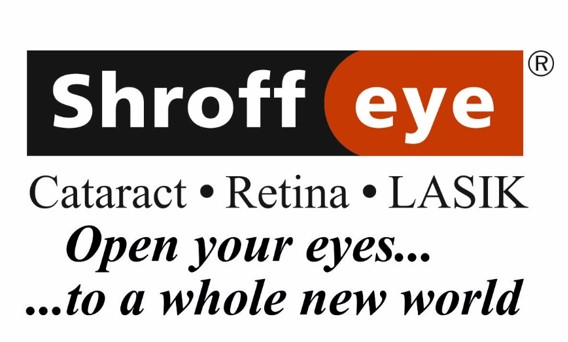Shroff Eye Hospital is India's First Eye Hospital accredited by the Joint Commission International (USA) since 2006. Shroff Eye is also India's first and only Wavelight Concerto 500 Hz LASIK center. Shroff Eye has stood for excellence in eye care since 1919. A firm commitment to quality is at the heart of all services provided at our centers at Bandra(W) and Marine Drive, Mumbai.
Synonyms and related keywords:glaucomatocyclitic crisis, secondary inflammatory glaucoma
Background: Glaucomatocyclitic crisis is a condition with self-limited recurrent episodes of markedly elevated intraocular pressure (IOP) with mild inflammation. It most often is classified as secondary inflammatory glaucoma. In 1948, Posner and Schlossman first recognized glaucomatocyclitic crisis and described the features of this syndrome. They identified the following features:
- Recurrent episodes of mild cyclitis
- One eye involvement
- Duration of attack varying from a few hours to several weeks
- Signs of a slight decrease in vision, elevated IOP with open angles, corneal edema
- Normal visual fields
- Normal optic disc
- Normal IOP, outflow facility, and all provocative tests between episodes
- Almost exclusively, this condition affects individuals aged 20-50 years.
- Both eyes may be involved at different times but very rarely contemporaneously.
History:
- In general, the symptoms are vague.
- Most commonly, a crisis presents with slight discomfort. The patient may be pain-free even though the IOP is quite elevated.
- The patient may report blurred vision or halo vision if the IOP is high and induces corneal edema.
- A history of past attacks of blurred vision lasting several days, which recurs monthly or yearly, is usual.
- Each crisis may last several hours to a few weeks.
- Patients follow a variable clinical course; some experience 1 or 2 episodes in their lives, while some have recurrences over many years.
- Typically, these episodes decrease in frequency with advancing age.
Physical:
- On examination, the eye is quiet with either no injection or a mild ciliary flush.
- The pupil often is dilated slightly or sluggishly reactive; the anterior chamber is deep and has an open angle.
- IOP usually is elevated in the range of 40-60 mm Hg.
- IOP is related to the duration of uveitis.
Causes:
- The cause of glaucomatocyclitic crisis has remained elusive. Several factors have been postulated as contributors to the development of glaucomatocyclitic crisis, to include the following:
- Abnormal vascular process
- Autonomic defect
- Allergic condition
- Variation of developmental glaucoma
- Cytomegalovirus (CMV) infection
Medical Care:
Complete medical care for patients presenting with glaucomatocyclitic crisis includes a reasonably thorough history of present illness, a review of drug allergies and sensitivities, a targeted past medical history and review of systems, a complete eye examination, a careful explanation of the disorder in accordance with the patient’s level of understanding, and a commitment to long-term follow-up care of the patient.
- Medical therapy should be individualized to meet the patient’s needs. Currently, the favored initial treatment is a combined regimen of a topical nonsteroidal anti-inflammatory drug (NSAID) and an antiglaucoma drug.
- Treatment recommendations include the following:
- Topical steroids – Prednisolone acetate 1% 1 gtt qid, followed by taper
- Topical antiglaucoma drops – Timolol 0.25-0.5% 1 gtt bid or equivalent, or dorzolamide 2% 1 gtt bid/tid or equivalent
- Systemic carbonic anhydrase inhibitors – Acetazolamide 250 mg PO qid
- Topical NSAIDs – Diclofenac 0.1% 1 gtt tid/qid or equivalent
- Oral NSAIDs – Indomethacin 75-150 mg/d PO
- NSAIDs reduce the inflammatory component by inhibiting the production of prostaglandins, and antiglaucoma medications reduce the influx of new aqueous; both these effects rapidly control the IOP. This combination also avoids potential IOP elevations caused by steroids in steroid-responsive patients.
- Well-informed and educated patients often can sense an impending attack based on ocular symptomatology, and they can institute appropriate self-therapy using an aqueous suppressant and a topical NSAID to blunt IOP elevations associated with treatment delays.
- Carefully observe patients periodically for recurrences of attacks and for development of POAG.
- In the absence of underlying chronic glaucoma, antiglaucoma agents do not prevent recurrences of glaucomatocyclitic crisis; therefore, they are not necessary between episodes.
Surgical Care:
An occasional patient [ very rarely] may require a filtering procedure, which is not effective in preventing recurrences of the episodes of iritis but may be useful in the management of high IOP seen with these episodes. For example, a patient with excessively high pressures threatening vascular perfusion would be a candidate for a filtering procedure. No benefit is gained from laser trabeculoplasty.
Consultations:
An ophthalmologist should be consulted to treat the elevated IOP and to provide long-term follow-up care for patients with POAG.
Gastroenterology consultation should be sought if the patient has gastric symptoms.
Activity: No restrictions on activity are required.






